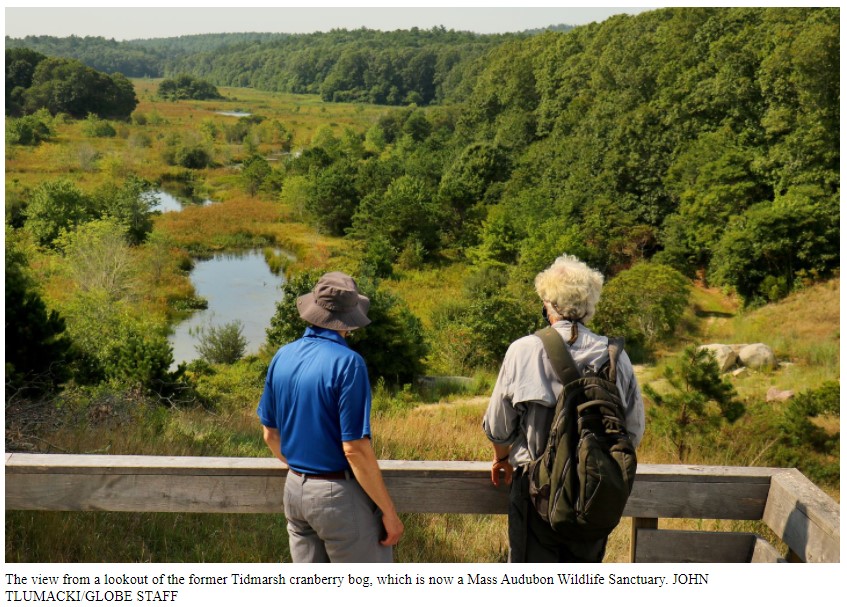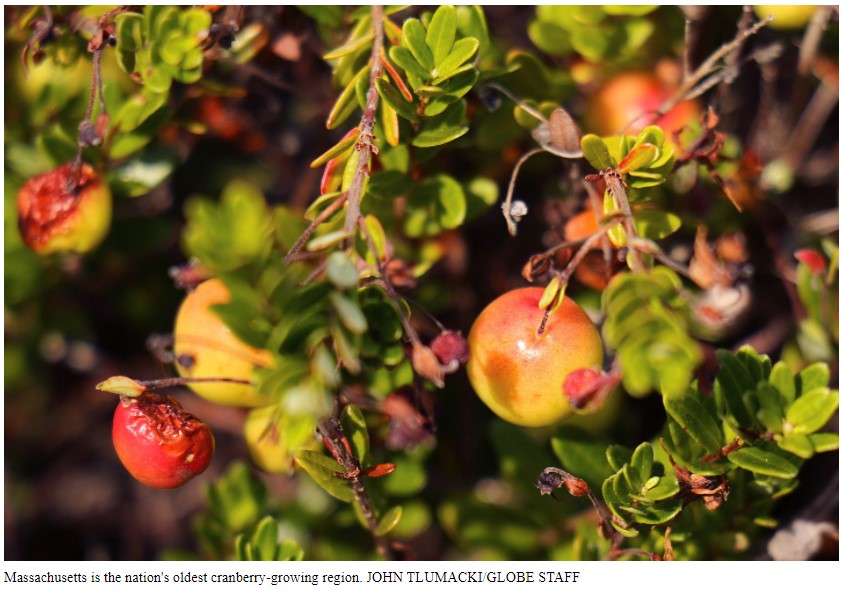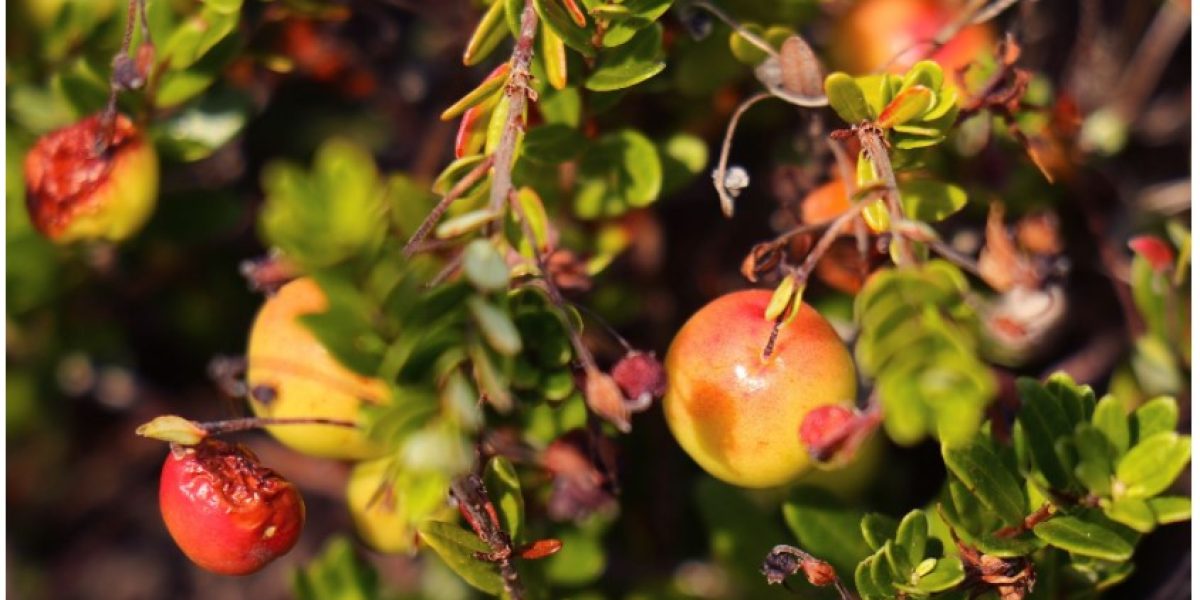
THE BOSTON GLOBE – For centuries, the ruby-colored fruit was like gold: tart gems that brought hard-earned wealth to generations of families in Southeastern Massachusetts.
In recent years, however, the state’s billion-dollar cranberry business has soured.
Environmental groups blame the bogs for draining ground water and harming ecosystems with dams, pesticides, and other pollution. Increasing competition from Canada to Chile has created a surge in supply, causing prices to crash. More recently, the Trump administration’s trade war with China has led to a 40 percent tariff on US cranberries, draining tens of millions of dollars from the industry.
Now, with many farmers aging and seeing limited interest from their children in working the land, the combination of competition, environmental regulations, and other forces is driving more of the state’s cranberry farmers out of the business.
“It’s a big undertaking running these farms, and it didn’t make sense for us to continue,” said Glorianna Davenport, 76, whose family spent 33 years running Tidmarsh Farms in Plymouth.
Three years ago, after years of depressed prices and with none of their children interested in taking over, Davenport and her husband sold their 610-acre farm, which once produced as many as 3 million pounds of cranberries a year.
Tidmarsh Farms is among a growing wave of Massachusetts cranberry farms that have closed, consolidated with other farms, or contracted, selling off less productive parts of their land for development or conservation.

Over the past decade, the state has lost more than a quarter of its cranberry farms, according to the Cranberry Marketing Committee, a federal body that monitors the industry for the US Department of Agriculture.
A sharp drop in prices for cranberries has been one of the main sources of the decline, while many of the farms’ costs have increased. In recent years, most farmers earned about one-third less per barrel of cranberries than they did at the peak of the business in the 1990s.
“Most of our growers are teetering at the break-even point,” said Brian Wick, executive director of the Cape Cod Cranberry Growers’ Association, a Plymouth-based trade group that represents most of the state’s remaining cranberry farms.
Although the number of farms has declined, the overall acres in production has remained roughly the same, suggesting increasing consolidation in the industry. There are now about 360 farms that till some 13,000 acres in Massachusetts, primarily in Plymouth, Bristol, and Barnstable counties.
But that use of land, too, is likely to change in the coming years.
A study in the journal Society for Ecological Restoration estimated that cranberry growers, especially those on less productive, more ecologically sensitive land, could reduce their farming acreage by as much as 20 percent in the coming years.

“The economics are just extremely challenging,” Wick said.
Climate change has also added unpredictability to the market, because growers rely on frozen bogs to maintain their crops. With temperatures rising in Southeastern Massachusetts, which long provided an ideal climate for cranberries, the bogs no longer freeze reliably and many of the plants have experienced a kind of whiplash that affects their ability to produce fruit, growers and scientists say.
“The fluctuating temperatures, especially in the winter, are bad for the plants,” said Christopher Neill, a senior scientist at the Woodwell Climate Research Center in Woods Hole, who studies the impact of environmental changes on the cranberry industry.
In an effort to help provide farmers with an exit strategy, state and federal officials are encouraging more owners to do what Tidmarsh Farms did. Rather than selling their land to the highest bidder, Davenport and her husband decided to ensure their bogs would be cleaned and restored to their natural wetlands. They sold their rolling hills along the coast to Plymouth and a land conservancy, with the guarantee that the bogs wouldn’t be developed.
“We might have made half as much as if we sold to a developer, but we got a lot of other value,” Davenport said. “This is something we felt we could do to make the planet better.”
Last spring, the US Department of Agriculture awarded Massachusetts $10 million to encouragecranberry farmers to convert their bogs to open space, restoring streams, wetlands, and a range of vital habitats.
State officials said increasing wetlands, especially those along the coast, would help absorb rising sea levels over the coming decades. The program seeks to restore some 900 acres of wetlands and preserve 1,800 acres of open space.
“This program is needed to help conservation-minded growers transition their land out of farming,” said Alex Hackman, cranberry bog program manager at the state’s Division of Ecological Restoration. “It’s important, given the pace and scale of farm retirements, other development pressures, and need to prepare our landscape for climate change and associated risks.”
Among those aging cranberry growers who have decided to take part in the program is Jeffrey Kapell, 74,whose 44-acre farm in Plymouth has experienced significant ups and downs since he started harvesting the fruit in 1975.
For Kapell, who has no heirs interested in taking over and who faces increasing competition from states such as Wisconsin, the future of his farm was uncertain.
So he recently decided to allow the federal government to convert a portion of his less productive land into open space. He plans to use some of the proceeds — nearly $600,000 — to upgrade other parts of the farm, with improved watering systems and other technology, to make them yield more fruit.
“I had to start thinking about my legacy, and I decided this was the way to go,” Kapell said. “It’s thrilling to know that the land will go into a conservancy.”

Matt Rhodes, owner of Edgewood Bogs in Carver, a 260-acre farm that has been in his family for four generations, made a similar decision. More than a decade ago, he entered the same program, which compensated him for giving up the right to farm on more than 225 acres.
Rhodes also invested the money in the more productive land on his farm, planting a different cranberry plant that produces more fruit than the older varieties he and many other farmers in the state have relied on. Massachusetts is the oldest cranberry-growing region in the country.
Such investments can be expensive, and it can take years before the new crops start producing sufficient fruit to offset the costs.
But, Rhodes said, “This was the way for us to adapt.”
On the remains of Tidmarsh Farms, where streams once again run freely and river otters and other wildlife are returning, the land is starting to look like it did before the farmers transformed it.
Officials at Mass Audubon, which now manages the property and converted it into a wildlife sanctuary, say they’ve identified 600 types of plants and as many as 300 species of birds inhabiting the area.
Overlooking another section of the farm still undergoing conversion back to its natural state, Glorianna Davenport looked at an old bog, where a mix of peat, decayed cedar trees, and mud mixed in surfaced ground water.
“This feels like a miracle,” she said.
By David Abel, Globe Staff







